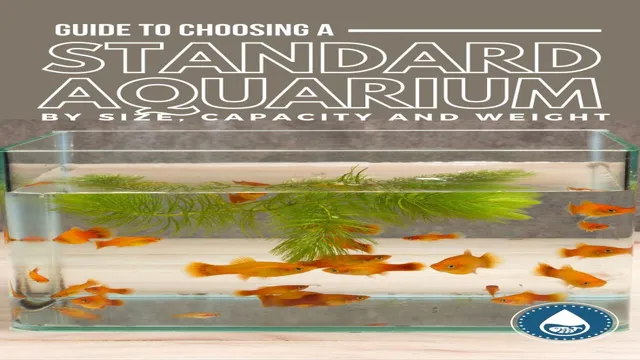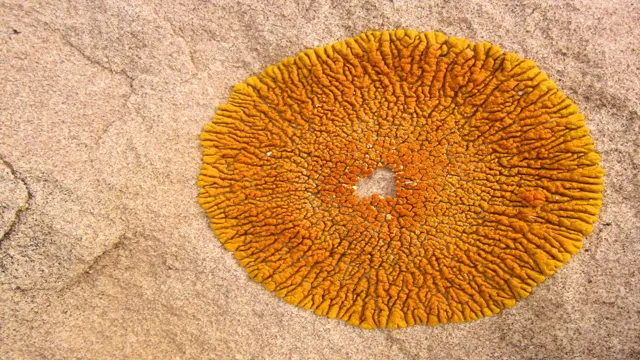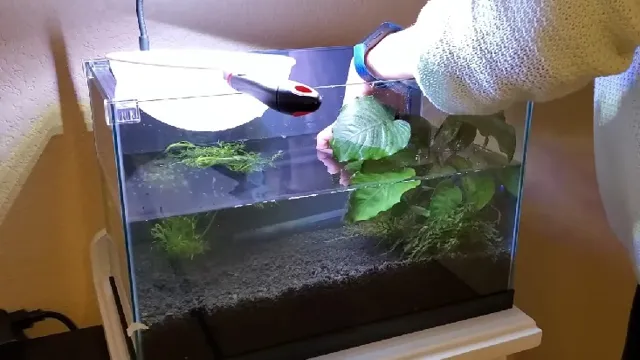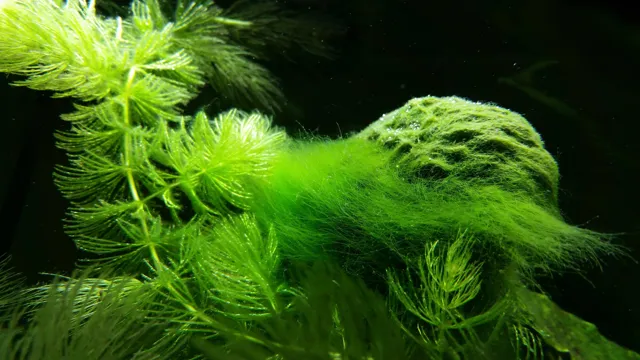As an aquarium enthusiast, choosing the right aquarium size can be an intimidating task. With so many options available, it’s easy to become overwhelmed. However, selecting the right size aquarium is crucial to the health and well-being of your fish.
In this blog post, we’ll explore different factors to consider when choosing the right aquarium size for your aquatic pets. Let’s dive in!
Calculate the Space You Have Available
When it comes to choosing the right aquarium size, the first thing you need to do is calculate the space you have available. Measure the area where you plan to put the aquarium and take into account any furniture or obstacles that may be in the way. It’s important to choose an aquarium that fits comfortably in the space and doesn’t overcrowd the room.
Not only will a cramped aquarium look unattractive, but it can also stress out your fish and lead to health problems. Keep in mind the type of fish you want to keep and their needs, as different species require different tank sizes. Ultimately, choosing the right aquarium size is crucial for the health and happiness of your fish, so take your time and do your research before making a decision.
Measure the Space You’re Planning to Put the Tank
When getting ready to set up your new fish tank, it’s essential to take accurate measurements of the space you plan to put it in. Calculating the available space is the first step in determining the type and size of tank that will work for your needs. Begin by measuring the length, width, and height of the area where you want to place your tank.
Don’t forget to account for any potential obstructions, such as wall protrusions or furniture that may limit the dimensions available for your tank. Once you have these measurements, you can start researching tanks that will fit your space requirements. Remember, a tank must not be too big nor too small for the space available.
A cramped or undersized aquarium can cause stress to your fish, leading to sickness or premature death. So, ensure you get the dimensions right before purchasing your aquarium.
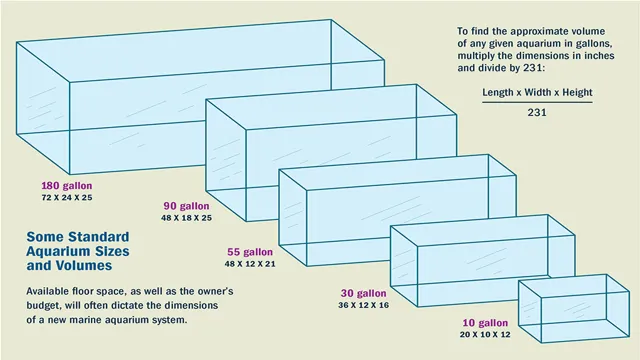
Determine the Maximum Size of the Tank You Want
When looking to purchase a new tank for your home or business, it’s important to determine the maximum size of the tank you want. This decision will likely be based on factors such as how much space you have available, your budget, and what you plan to use the tank for. In order to calculate the space you have available, consider the dimensions of the room or area where you plan to place the tank, as well as any potential obstacles or restrictions that may impact the size of the tank you can install.
It’s also important to consider the weight of the tank and any potential hazards associated with its installation. By carefully considering these factors, you can determine the maximum size of the tank that will work best for your needs and ensure that it fits comfortably and safely in the space you have available. Whether you are looking for a small tank for your home aquarium or a large commercial tank for your business, taking the time to properly determine the maximum size you need will help ensure that you make a wise investment that will serve you well for years to come.
Consider the Fish
When it comes to choosing the right aquarium size for your fish, there are a few things to consider. Firstly, you need to think about the type of fish you want to keep and how many you plan to have. Different fish have different space requirements, so it’s important to do your research before buying.
Secondly, you need to think about the size of the space where you’ll be keeping the aquarium. While you want to give your fish enough room to swim around and flourish, you also don’t want to overcrowd the living space you have available. Finally, it’s important to remember that the bigger the tank, the easier it will be to maintain a healthy environment for your fish.
A larger tank will have a better filtration system, which means your fish will remain healthy without too much intervention on your part. So, when choosing the right aquarium size, keep these factors in mind and you’ll be well on your way to happy, healthy fish.
Research the Species You Want to Keep
When deciding to keep fish, it’s essential to research the species you want to take care of. One aspect to consider is the temperament of the fish, as some species are more aggressive or territorial than others. Another crucial factor to look at is the water parameters needed for the specific fish to thrive. (See Also: How to Grow Houseplants in Aquarium: A Beginner’s Guide to Indoor Gardening)
Different fish have different preferences for pH levels, hardness, and temperature. It’s also important to consider the size of the fish and the aquarium they’ll need. If you plan to keep multiple fish, you’ll need to ensure they have enough space to swim and establish territory.
By researching the requirements of the species you want to keep, you can ensure that you provide the best possible care for your fish and create a suitable environment for them. You might even discover some fascinating behaviors and characteristics unique to the fish you’ve chosen to keep!
Calculate the Frequency and Volume of Water Changes Required
When it comes to keeping fish, it’s important to consider their specific needs when determining the frequency and volume of water changes required in their tank. Different types of fish have different requirements, based on factors such as their size, activity level, and waste output. For example, a larger, more active fish will produce more waste than a smaller, less active one, which means that their tank will require more frequent water changes.
Additionally, it’s important to consider the overall health of the fish and the quality of the water they are living in. Poor water quality can lead to stress and disease, so ensuring that the water is clean and well-maintained is crucial. By taking these factors into account, you can calculate a water change schedule that works for your specific fish and their needs.
And remember, regular water changes are key to keeping your fish happy and healthy!
Consider the Adult Size of Each Fish
When it comes to choosing fish for your aquarium, it’s important to consider the adult size of each fish. You don’t want to end up with fish that outgrow your tank and become stressed or aggressive. Some fish may seem small and cute when they are young, but they can grow to be quite large.
For example, a common goldfish can grow up to 12 inches long! It’s essential to research the adult size of each fish species you’re interested in and make sure it’s a suitable match for your tank size and other fish. Don’t be swayed by the appeal of a cute, small fish without considering its potential size as an adult. By taking the time to consider the fish you add to your aquarium, you can create a vibrant, healthy community that will thrive for years to come.
Factors Affecting Tank Size Selection
Choosing the right aquarium size can be a tricky task and factors affecting the decision may vary from person to person. However, there are a few basic principles that can help in narrowing down the search. Firstly, it is important to consider the type and number of fish that will be kept in the tank.
A bigger tank is generally better suited for more fish and for larger species, whereas smaller ones are more suitable for smaller species. Secondly, the space available to house an aquarium should be taken into consideration. The size of the tank should fit well in the designated area and should be stable enough to withstand the weight of the water volume.
Additionally, the maintenance and upkeep required for a larger aquarium should also be taken into account. The larger the tank, the more water changes and equipment may be necessary. Lastly, the budget should be considered as larger tanks come with a higher price tag.
In the end, the right aquarium size will depend on a balance of these factors and the personal preferences of the owner.
Shape and Design of Aquarium
When it comes to selecting the right tank size for your aquarium, there are a few factors you’ll want to consider. Firstly, think about the space you have available. You may want to go with a larger tank, but if you don’t have room for it, it’s not going to work. (See Also: How to Aquarium Fish: A Step-by-Step Guide to Creating a Healthy Environment for your Fish)
You’ll also want to consider the type and number of fish you plan on keeping. Some fish require more space than others, and if you overcrowd your tank, it can lead to stress and even disease. Additionally, think about the shape and design of the aquarium.
A taller tank is better for fish that like to swim up and down, while a wider or longer tank is better for fish that like to swim horizontally. Ultimately, the size of your aquarium will depend on your individual needs and preferences, but taking these factors into consideration will help you make the right selection for your aquatic pets.
Number and Size of Fish
When it comes to setting up a fish tank, the size you choose is important and directly affects the health and happiness of your fish. One of the main factors to consider when determining the appropriate size tank for your fish is the number and size of the fish you plan to keep. Generally, the rule of thumb is to allow one inch of fish per gallon of water.
However, this is just a rough estimate and doesn’t take into account the behavior and activity level of your fish. It’s important to research the specific breed of fish you plan to keep to determine their ideal tank size and environment. Large and active fish, such as cichlids, require more space to swim and explore, while smaller fish, like tetras, can thrive in a smaller tank.
Additionally, overcrowding your tank can result in poor water quality and stress for your fish. Properly balancing the number and size of your fish with the right tank size will help ensure a healthy and happy environment for your aquatic pets.
Filtration System and Equipment
When selecting a tank size for your filtration system, several factors must be taken into consideration. One such factor is the amount of water in your aquarium. The more water you have, the larger the tank size you will need.
Another factor is the type and number of fish you have in your aquarium. If you have a lot of fish or fish that produce a lot of waste, you will need a larger tank size to accommodate their needs. Additionally, the type of filtration system you have will affect the tank size selection.
If you have a powerful filtration system, you may be able to get away with a smaller tank size. However, if you have a weaker filtration system, you will need a larger tank to ensure that the water remains clean and healthy for your fish. Remember, selecting the right tank size is crucial for the overall health and well-being of your aquarium and its inhabitants.
So take the time to carefully consider all the factors before making your decision.
Budget and Maintenance Time
When it comes to selecting the right size for your fish tank, there are several factors you need to consider. One of the most important is your budget and the amount of maintenance time you have available. Larger tanks can be more expensive to purchase and maintain, so you need to be sure you can afford the cost.
Additionally, larger tanks require more time and effort to clean and maintain. If you have a busy schedule, a smaller tank may be a better choice for you. However, keep in mind that smaller tanks can be more difficult to maintain a stable environment for your fish, as they can become polluted more quickly.
So, be sure to weigh the pros and cons of each size option before making your final decision. (See Also: How to Figure Gallons in Aquarium: A Beginner’s Guide to Calculate Accurate Water Volume)
Conclusion
Choosing the right aquarium size is no small feat – pun intended! There are a variety of factors to consider, from the type and number of fish you want to keep, to the space you have available in your home. But fear not, with a little planning and research, you can find the aquarium that’s just right for you and your finned friends. Think of it like Goldilocks and the Three Bears – you don’t want an aquarium that’s too big, too small, or just right now but doesn’t leave room for growth.
So do your homework, think about your needs, and don’t hesitate to reach out to experts in the field to help you make the best decision for you and your aquatic companions. With the right aquarium size, you’ll be swimming in success!”
FAQs
What factors should I consider when choosing the size of my aquarium?
When choosing the size of your aquarium, you should consider factors such as the type and number of fish you want to keep, the space you have available, and your budget. Ideally, you should ensure that your fish have enough room to swim comfortably and that the aquarium can support their needs.
Can I keep multiple fish species together in a small aquarium?
No, you should not keep multiple fish species together in a small aquarium as this can lead to overcrowding and territorial disputes. Different fish species have different requirements for water temperature, filtration, and oxygen levels, so it is important to choose an aquarium size that can accommodate the needs of all the fish you want to keep.
What is the minimum size of an aquarium I should consider?
The minimum size of an aquarium you should consider depends on the type and number of fish you want to keep. As a general rule of thumb, you should have one gallon of water per inch of fish. However, this may vary depending on the specific needs of the fish species you want to keep.
Can I upgrade to a larger tank later on?
Yes, you can upgrade to a larger tank later on as your fish grow and require more space. However, it is important to ensure that the tank is properly cycled before transferring your fish to it to avoid any stress or health issues for your aquatic pets.
How much space do I need to leave around the aquarium?
You should leave approximately 5 inches of space around the aquarium to allow for proper maintenance and cleaning. This also ensures that there is sufficient ventilation and that the tank is not exposed to direct sunlight or temperature fluctuations.
How do I determine if my aquarium is too small for my fish?
You should observe your fish and their behavior to determine if your aquarium is too small for them. Signs that your fish may be cramped include excessive swimming in one area, aggressive behavior, and difficulty breathing due to low oxygen levels.
Will a larger aquarium require additional maintenance?
Yes, a larger aquarium may require additional maintenance such as more frequent water changes and a larger filter to ensure that the water remains clean and healthy for your fish. However, the benefits of a larger tank, such as more space for your fish to swim and a more visually appealing display, often outweigh the additional maintenance.

